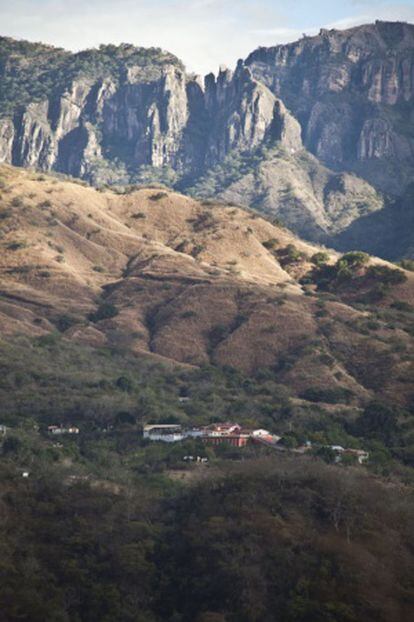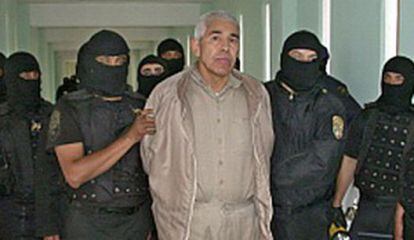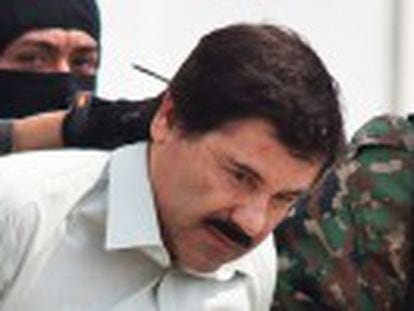The cartel that never gave up
The jail escape by the Sinaloa’s leader shows the power the organization still commands


With Saturday’s spectacular escape by Joaquín El Chapo Guzmán from a maximum security prison outside Mexico City, the Sinaloa drug cartel has demonstrated that it has retained more power and influence than might be expected since the capture of its leader last year.
The cartel, which was created in the mountains of Sinaloa state in the middle of the last century, is the biggest drug-trafficking operation in the world, and controls all of its own production, as well as the consumer market.
It is estimated that the marijuana and poppy fields that Guzmán oversees in Mexico cover around 60,000 kilometers of land, an area larger than Costa Rica. The cartel’s major markets are Europe and the United States.
Besides controlling major drug routes through Central America, the organization is also involved in heroin-trafficking in the Middle East. The Sinaloa bosses also produce methamphetamine in large quantities using chemicals purchased in Asia.
According to the InSightCrime foundation, the cartel operates in 50 countries and its offshoot businesses include prostitution, arms trafficking and money laundering.
Guzmán, 58, was well known for making the annual Forbes magazine rich list of billionaires before his capture in February 2014.
Guzmán’s legend compares to those of Al Capone and Pablo Escobar
Despite his arrest, the cartel’s leadership reportedly remains intact. His second in command is Ismael El Mayo Zambada, 67, who, after nearly 50 years in the trafficking business, has never spent a day inside a jail.
In an interview given to the late journalist Julio Scherer, Zambada described his family life with his wife, five adult daughters, 15 grandchildren and one great-grandchild.
“The six of them are here at a ranch. They are products of the mountains just like me,” he said.
Another of Guzmán’s principal associates is Juan José El Azul Esparragoza, who is said to be one of the cartel’s main power brokers. Last year, reports circulated that the 66-year-old Esparragoza had died from a heart attack. But Mexican authorities are not sure whether he is actually dead or just faked it.
The release of Rafael Caro Quintero, another top Sinaloa member, by Mexican authorities in 2013 sparked a diplomatic incident between the United States and Mexico.

The 62-year-old, who was known as the “trafficker’s trafficker,” served 28 years for the murder of a US Drug Enforcement Administration (DEA) agent before he was released.
Mexican authorities have been unable to find Caro Quintero, who is said to be hiding out in the hot and dry Badiraguato mountain range in Sinaloa state, where the cartel was first organized.
When Guzmán was captured last year, authorities asked him why he was hiding out in the resort city of Mazatlán and not in the Sinaloa countryside like his associates. He reportedly told investigators that he was going to seek refuge in the mountains after he visited his wife and daughters. Whether or not this was true is unclear.
From the mountains in Sinaloa, or perhaps other secret locations, these three cartel leaders – if they are all still alive – still control the global drug trafficking network with Guzmán.
One of the organization’s “rising stars” is a former judicial police officer, Dámaso López Núñez, who is believed to be aged around 50.

It is difficult to imagine a summit of drug leaders in the Sinaloa countryside. But then again it was difficult to believe that Guzmán was able to escape from his heavily guarded jail cell on Saturday through an elaborate tunnel – it was a plan that sounded like something straight out of a film script.
Guzmán’s legend has grown as big as the legacies created by the crime sprees of Al Capone and Pablo Escobar. The Colombian cartels, which ruled over the global trafficking networks in the 1980s and 1990s, have now been replaced by their Mexican counterparts – the Zetas, the Gulf cartel, the Beltrán Leyva family, the Templar Knights of Guerrero state, and the New Generation of Jalisco.
But with Guzmán’s escape, the Sinaloa cartel has once again positioned itself as the world leader in the illegal narcotics trade.
English version by Martin Delfín.











































